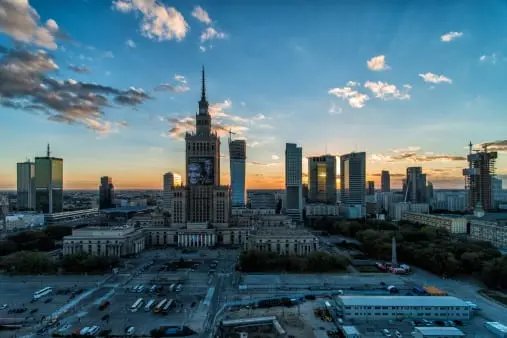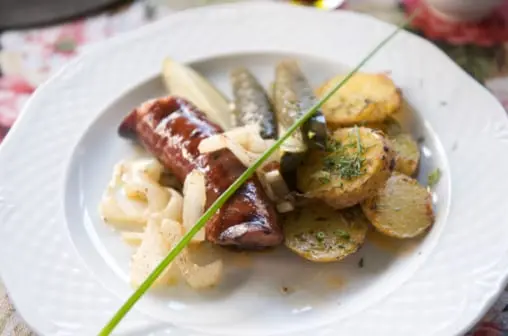Poland is our closest neighbor, and in pre-Petrine times it was from there that all European novelties, including gastronomic ones, came to Russia. Now our tourists go for culinary experiences in more exotic countries, and, perhaps, completely in vain? Anna Deliandidi talks about what you should try in Poland.

Poland is kind of like Europe, but a little “sick”. When you leave the hotel for the first time in Warsaw and see almost the high-rise of the Moscow State University, you want to blink. You start looking around to make sure that you have crossed the border after all, and you constantly catch yourself thinking that all this is a surreal dream about Moscow inside out. Nevertheless, the city center can quite reconcile you with reality, andWarsaw will eventually turn out to be a city of meat and jazz, which is strange as a combination. If beauty is not enough, you need to go to the train station and go toKrakow is a small wonder, where it’s like burying your nose in the warm fur of a tame bear…
But the food in both cities is about the same, so we will tell you a little about everything.
The first is the interior. No owner of any other nationality shows such attention to what is painted on the walls of his cafe. From Greek temples to Gothic vaults and back-depending on the imagination and purse of the owner, each cafe strives to the mysterious heights of its own understanding of the interior ideal.
The second is sausage. The third is cabbage. There is no escape from them, and for a long time after the trip, your clothes will smell of these ingredients.
Of the Polish cheeses, it is worth mentioning oscypek — the most specific Polish cheese made by the Highlanders in a home-made way from sheep’s milk.
Each region of the country is famous for its varieties of sausage, the best are considered to be dry Krakow and smoked in the smoke of juniper branches hunting sausage. It is said that the all-knowing German burghers often go here, preferring Polish sausages to their German ones.

From fastfood, in addition to pizza and kebabs of completely non-Polish origin, in the stalls on the streets you can buy a casserole with mushrooms and cheese, you can try it quite boldly.
And if you decide to have lunch in a cafe or restaurant, then as a snack you can be offered pickles, assorted varieties of smoked meats and meat prepared in different ways, rustic bread with lard or Baltic herring in sour cream.
As for soups, the oldest native Polish dish is zhur, a sour soup on kvass made from rye flour and stale bread, which is served with sausage and a hard-boiled egg. In general, the first dishes in Poland are red borscht, pickle and mushroom soup. Don’t be surprised if they also have sausage floating in them. It’s very Polish!
Traditional hot dishes of Polish cuisineusually consist of meat, vegetables and sauces. Very often this is bigos, stewed meat with cabbage, but in general absolutely any dish (unless you specify otherwise in the request) you can bring it with stewed or sauerkraut. It will even be put in the shawarmathat you buy from quite natural Arabs on the street, if you do not stop them in time. As a side dish — a variant of the ubiquitous cabbage, cabbage and Cabbage — hot dishes are sometimes served with boiled or baked potatoes, buckwheat or pearl barley porridge or Polish small dumplings. Often on the table there are fried potato pancakes with sweet or spicy filling, which can be both microscopic and simply huge, and also large dumplings with cottage cheese, meat, cabbage and mushrooms or fruit and berry mix.
Among the Polish desserts, you can note apple pie, various donuts with jam and poppyseed cake .
Poles prefer to drink such rather heavy lunches and dinners thoroughly: the main drink of Poland was and remains vodka, including with the taste of herbs, sweet and strong honey is very popular.









